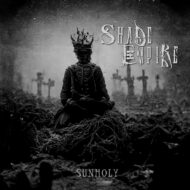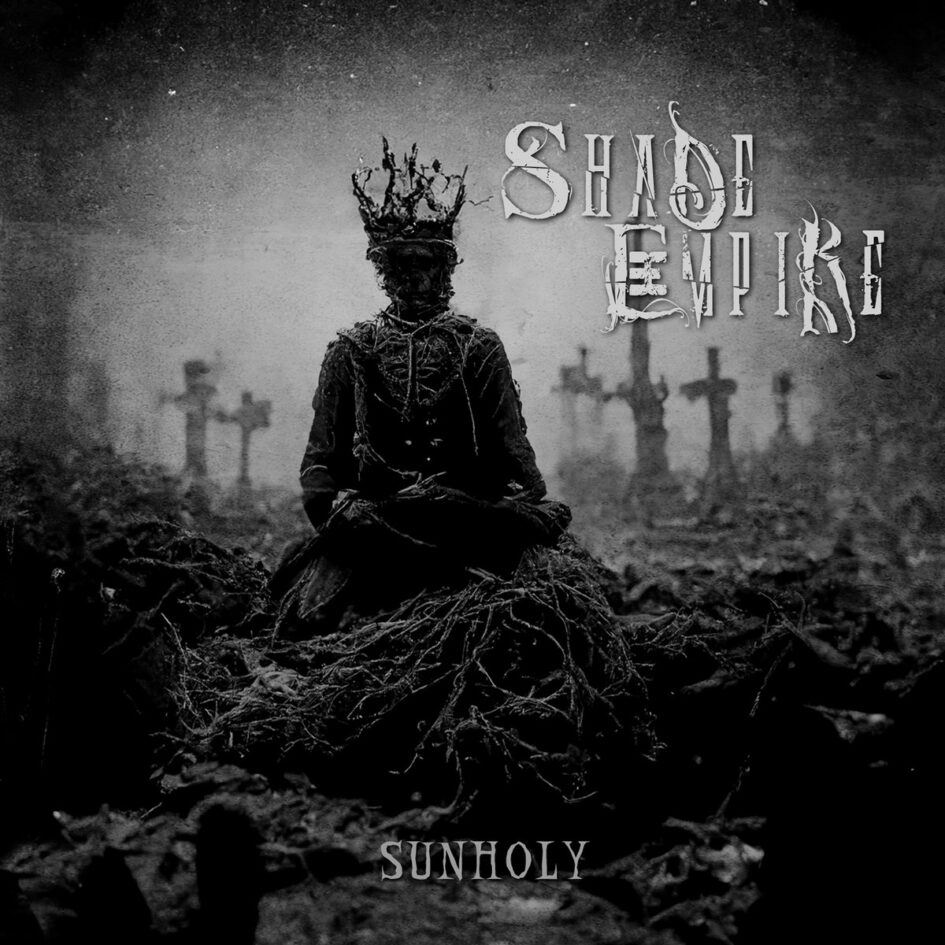 Sunholy is the sixth full-length album from Finns Shade Empire who started out as far back as 1999. A band with a respectable discography and with the band members all long-term soldiers. Singer Henry Hämäläinen, the number of umlauts in his surname indicating the number of vocals styles mastered, is the newest addition, but even he has been with the band since 2017 already. Sunholy, however, is the first long player featuring him as singer, so some changes in sound are naturally to be expected. What does the new album offer? Well, that’s not so easy to describe, actually. But I will do my best.
Sunholy is the sixth full-length album from Finns Shade Empire who started out as far back as 1999. A band with a respectable discography and with the band members all long-term soldiers. Singer Henry Hämäläinen, the number of umlauts in his surname indicating the number of vocals styles mastered, is the newest addition, but even he has been with the band since 2017 already. Sunholy, however, is the first long player featuring him as singer, so some changes in sound are naturally to be expected. What does the new album offer? Well, that’s not so easy to describe, actually. But I will do my best.
For starters, I can tell you that the genre tag that Encyclopaedia Metallum lists for the band no longer applies. At least not in its entirety. From “Symphonic Industrial Death/Black Metal” (!) you can easily cross out the latter bits, since the new album features only overtones of those genres. And don’t let anybody else convince you otherwise. Thunderous drumming and guttural vocals do not make a death metal band. The sound of the album at hand is far too clean, too polished, too nice, too mainstream to be called death or black metal.
The PR blurb for the album is more correct, but not necessarily more specific. Calling the band “Symphonic Extreme Metallers” is fitting, but doesn’t provide much more information, since “extreme metal” is just an umbrella term for numerous subgenres of metal. And I can’t confirm that “Shade Empire have developed their own genre” either, as the blurb puts it. A new genre would mean newly-configured, identifiable sound elements, and a unique philosophy and aesthetics. There is none of that here.
Instead, I find, Sunholy is rather a hotchpotch of all things metal with something put on top of that. To explain further and keep with the culinary reference, I’ll describe it like this: Let’s say you take all the famous dishes of a country’s cuisine (not specifying any country here, because I don’t want to be accused of anything), put them in a pot, mix, but not too thoroughly, since you want the individual dishes still to be recognizable, then add a bit of cream on top and – voilà!
By now you hopefully have an overall picture of what Sunholy sounds like. It’s time to take a look at the specifics. Yes, there are “brutal guitar patterns, multi-layered (…) synth walls, devastating drum parts, complex bass assaults”, all very impressive, professionally executed and combined to highly dramatic effect and featuring melody in abundance, as is the custom with symphonic metal. In addition, a surging sea of violins can frequently be heard in the background, and here and there a jazzy saxophone and a piano. The tempi change quickly, as do the vocals, from clean to growly, from quiet to loud. Yet, despite the obvious multitude in sound and style, the music becomes strangely predictable after a while. If there is a rather slow beginning with clean singing, as for example on track number three, This Coffin an Island, you know that growled vocals await you just around the next break. And punctual as clockwork, there they come.
As the album progresses and you hear a choir singing (Maroon), then a passage that might be called rapping (All Consuming Flame), as in nu metal, and finally folky vocalizations echoing seemingly from mountaintops (Profane Radiance), a sense of overload sets in, and you ask yourself if there is anything left that has not been integrated here. Then the album ends with track number nine, Rite of Passage, a slow, mellow and slightly boring piece of music, and you realize that the overload is preferable to this.
Sunholy is evidently a product of immense labour, and, from the sound of it, a product that got a lot of money invested in it, too. Yet by trying to be all at once it ends up being nothing in particular. It’s a pity, really. Because there is nothing negative to be said about the musicianship or the production. Everything is top notch. Nevertheless, this proves that great parts do not automatically make an excellent whole. That’s my opinion at least. It’s up to you now to give the album a listen and form your own.
(6/10 Slavica)

Leave a Reply